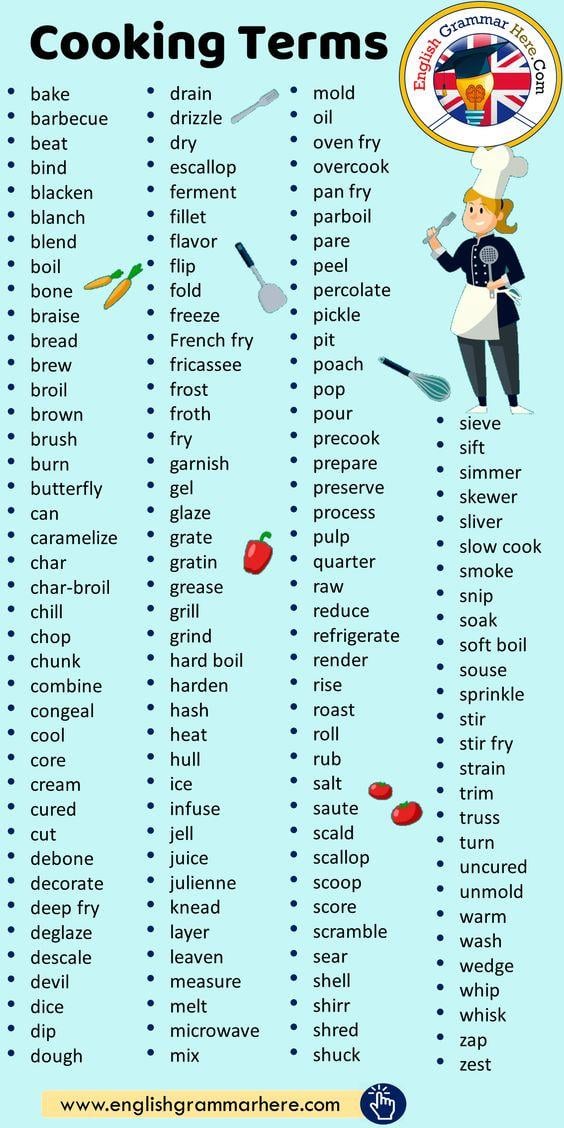This page has a glossary of ESL cooking terms several tasks for you to do to help you remember these vocabulary words. Being able to cook is a useful skill, and it is also good to be able to talk about food and cooking. It is also a great topic to talk about with EFL students around the world because everyone likes to eat. The vocabulary on this page will let you explain about cooking and the kitchen.

Talking about eating, cooking and food in general is a great skill for English learners because it's something everyone does and can related to. The following five activities are perfect for brining cooking into the EFL classroom.
1. Describing Food
Start off with this vocabulary building exercise to introduce students to adjectives related to food by asking your students to describe different foods. Depending on the size and ability of your class, you can use different strategies:
- Show flashcards with pictures of different types of food (fruits, vegetable, dairy, entire dishes, etc.)
- In pairs or as a class, ask students to list one food for every letter of the alphabet (you can do this standing up and those who can't think of a food have to sit down until there's only one student left, who wins the game)
- Ask students to discuss their favorite foods in groups or with a partner and why they like them
2. Write Your Own Recipe
Once your students are a little more comfortable with the vocabulary, you can move on to this activity. Having your students writig a cooking recipe is a great way to practice cooking vocabulary while using sequences and writing instructions at the same time. Words such as first, next, after that, until and later can all be incorporat4ed in this theme of cooking. Simply start by asking a simple question: “Do you know how to boil an egg?” While most students might know the answer, describing the cooking process in English might be a little hard. Go over the recipe step by step together with the class making notes on the board. This should include the ingredients, equipment and method that need to be used. Once every students understands the concept, you can ask them to go ahead and write their own recipe for a dish they like.
3. Foods of the World
This is a great activity in an international classroom while also giving the students the freedom to practice fluency when talking about food. You can start by watching a video showing kids eating their local breakfast from countries all around the world (a simple Google search will immediately pop up this video). After the video, brainstorm different countries then have students write different foods and drinks from each one. Start a discussion about which foods your students have tried, which ones they haven’t, and which ones they would like to try and why.
4. Cooking Competition
If you have the facilities, you might want to give your students a hands-on cooking experience by hosting a cooking competition! Research has shown that combining physical activity with language learning increases the success and students are able to learn faster. This activity could involve simply giving your students a recipe (in English) and then putting them into groups and having them cook. Alternatively, you can ask your students to cook something at home and bring it to class, explaining how they cooked it, followed by a food party!
5. TV Chefs
This activity combines cooking language with presentation and public speaking skills! Have your students pretend to be a TV Chef and create a cooking video at home (or host a competition in class!). It's important that you tell your students to record a video and describe each step of the cooking process, as if they were presenting a cooking show.
Are you interested in teaching English as a foreign language?
Get your TEFL or TESOL certificate with ITTT.
Register now & get certified to teach english abroad!


